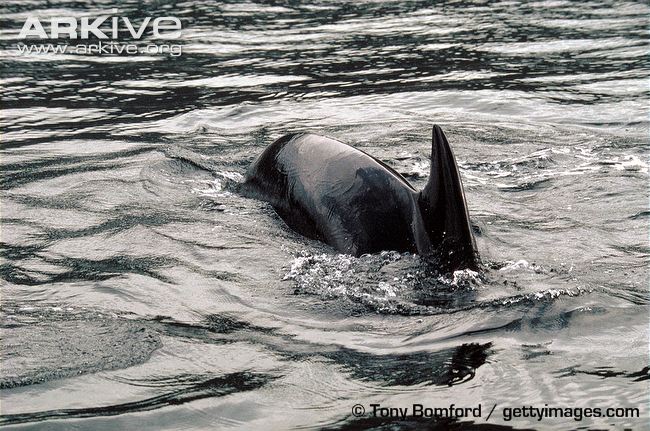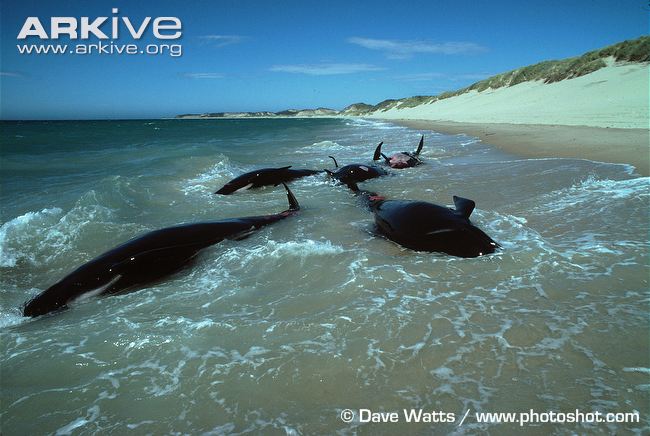Interactions
The long-finned pilot whale has predatory and parasitic interactions with other species in their ecosystems including species such as squid, fish, and Vibrio bacteria (Preston 2011). The whales engage in symbiotic interactions with humans in which they can benefit from human activities by using their resources to better obtain their food. Humans can in turn benefit from the long-finned pilot whale through education and enjoyment, but sometimes more negatively, being that the whales can sometimes be a food source (Preston 2011).
Besides having a predatory interaction with their number one food source, squid, they also have a parasitic interaction with Vibrio bacteria (Preston 2011). These bacteria reside in ocean waters and have the ability to infect wounds on the long-finned pilot whale. The problem with this bacteria is that they can be very hard to treat because of the antibiotic resistance the whales attain by ingesting their already antibiotic resistant prey (Van Bressem et al. 2008). The long-finned pilot whale is a carnivore feeding mainly on fish and mollusks, and therefore is a tertiary level consumer. They eat around 75 pounds of food per day preferring mainly squid but also many fish like mackerel, turbot, and Atlantic herring (Preston 2011).
Besides seeking out prey with their pods throughout their habitats, the Globicephala melas are smart in the way that they take full advantage of human fishing activities to attain their meals. The large numbers of fish humans draw into one area makes obtaining food a lot easier for the long-finned pilot whale (Preston 2011). Humans are predators to the long-finned pilot whale, as they are hunted for their meat in areas like the Faeroe Islands (ARKIVE 2003). The long-finned pilot whale is also held in captivity for human enjoyment and education due to the ability of the species to respond to human commands (Preston 2011). Human activity such as Navy sonar and seismic exploration sound is also to have thought to have a negative effect on the pilot whales due to their own echolocation capabilities (Taylor et al. 2008).
The Globicephala melas impact squid populations due to it being their top choice in prey. The long-finned pilot whale has a parasitic relationship with the Vibrio bacteria (Preston 2011) due to its ability to infect already open wounds on the whale (Van Bressem et al. 2008). Humans can positively affect the long-finned pilot whale by providing them with easy access to food by commercial fishing but also negatively affect the whales by hunting them for their meat (ARKIVE 2003) and through human technology such as Navy sonar (Taylor et al. 2008). Overall, we as humans can either drastically hurt the long-finned pilot whale population or help it thrive. All of these very special interactions among different species affect the pilot whale greatly in its habitat.
<<Reproduction Home Facts>>


